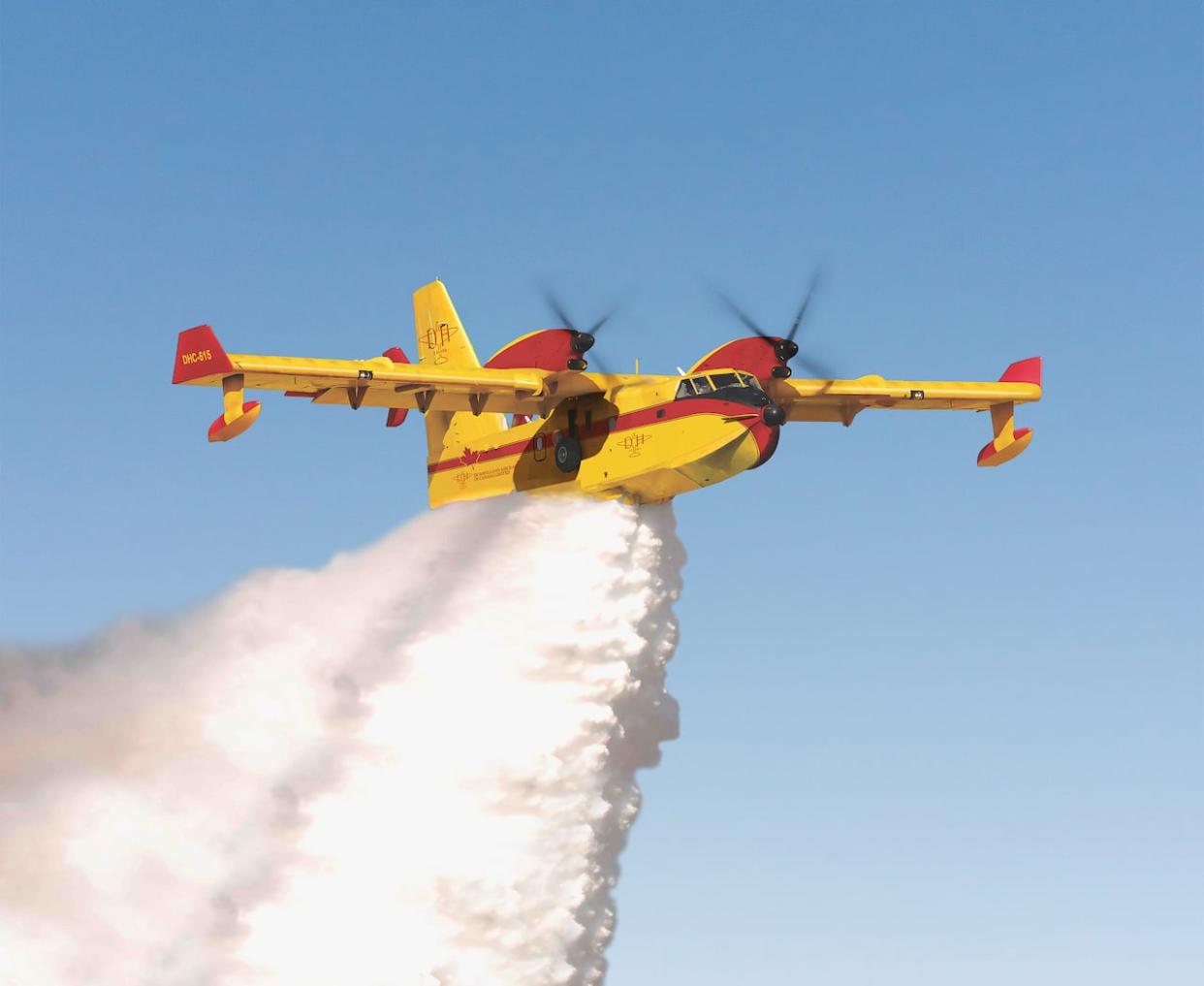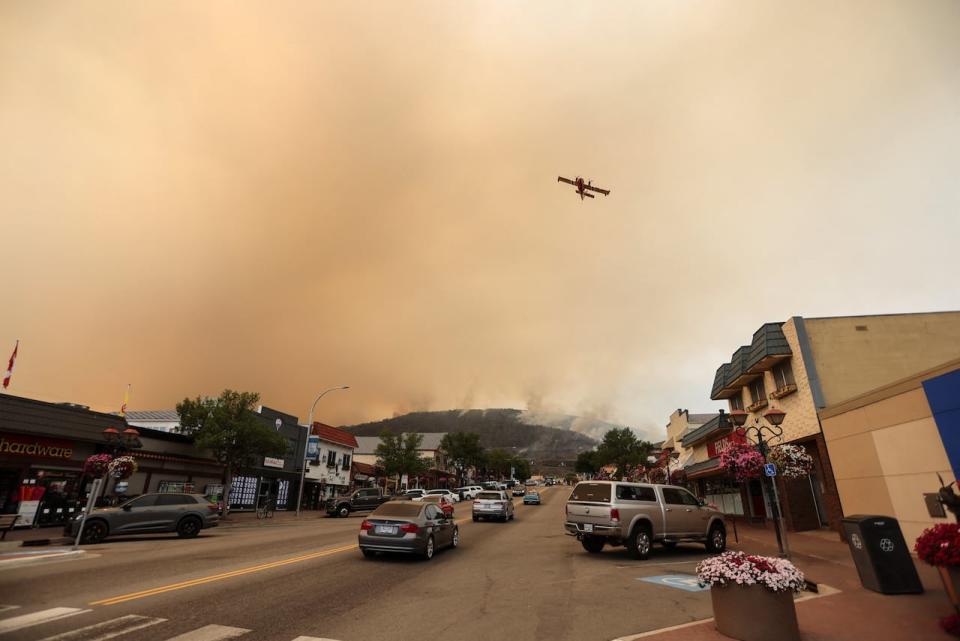Aircraft manufacturer builds new firefighting planes on Vancouver Island

Across the world this summer, wildfires have destroyed forests, habitats and homes, with the International Panel on Climate Change reporting that fires are becoming more frequent and extreme.
As demand for better wildfire fighting tools grows worldwide, aircraft manufacturer De Havilland Canada says it has begun building new DHC-515 Firefighters, or what some might call water bombers.
Neil Sweeney, vice-president of corporate affairs at De Havilland, says the DHC-515 can scoop up about 6,000 litres of water in about 12 seconds.
According to the company's website, the plane can deliver multiple drops of water in rapid succession and handle high winds that are often present with large scale wildfires.
Sweeney says it's also a short take-off and landing plane, meaning it doesn't take long to get off and on the water.
"You're talking about a very large volume of water that can drop on a fire very rapidly," Sweeney told All Points West host Jason D'Souza.
"In countries like France, they'll use a squadron of four at a time — close to 25,000 litres of water being dropped onto a fire every 10 minutes or so. That's why the countries around the world really like this aircraft."
DHC-515 Firefighters aren't entirely new to the wildfire-fighting scene — they build on Canadair planes CL-215 and CL-415, which have been used for fighting wildfires for over 50 years, De Havilland Canada says. The new model includes upgrades that will increase functionality and effectiveness, the company adds.

A water bomber flies over the Eagle Bluff wildfire, after the fire crossed the Canada-U.S. border from the state of Washington and prompted evacuation orders in Osoyoos, B.C., on July 30, 2023. (Jesse Winter/Reuters)
When a wildfire rages in B.C., some people have asked why the Martin Mars water bomber hasn't been used.
The firefighting aircraft has sat on Sproat Lake near Port Alberni since being retired in 2016.
It was built as a transport plane for the U.S. Navy in 1946, and can carry more than 27,000 litres of water.
Because of its size, however, it was only able to land on large bodies of water.
Creating jobs
Sweeney says the company currently has a contract to build 22 aircraft for the European Union, and expects more orders to be placed in coming years.
The aircraft will be built in part in North Saanich, near the Victoria International Airport.
He says parts of the fuselage and wings will be manufactured in B.C., while final assembly will be done at the company's facility in Calgary.
Sweeney says about 125 people are currently working at the North Saanich plant, but estimates upwards of 300 individuals may be needed to work there in coming years.


